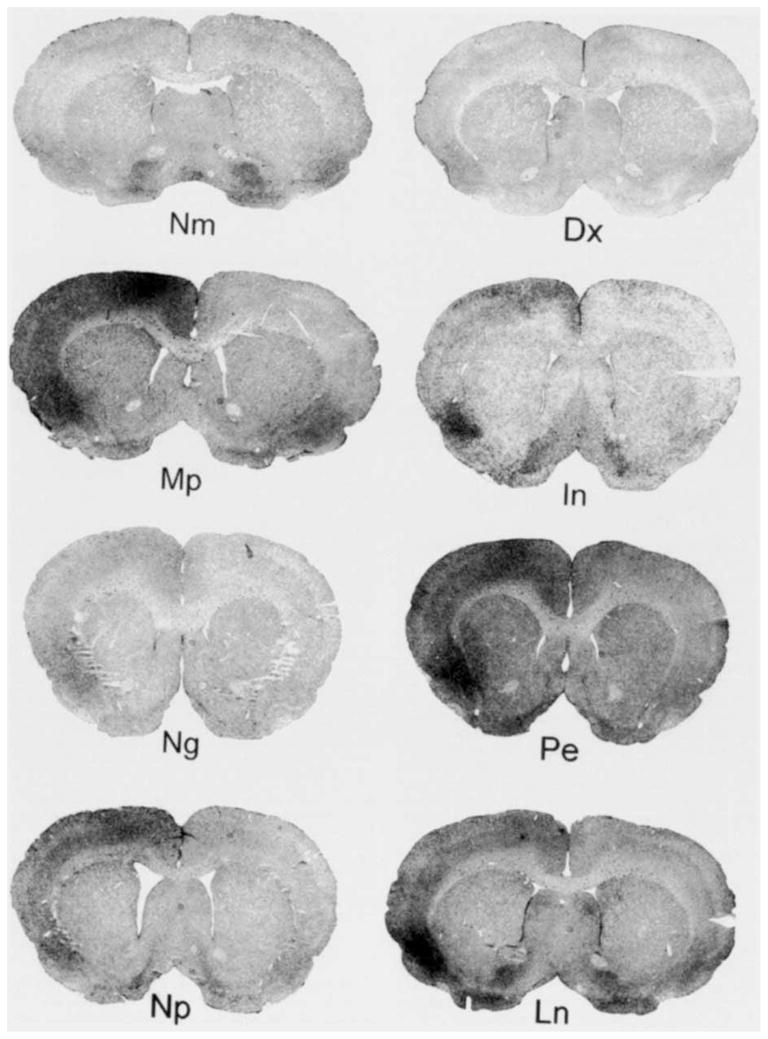Fig. 4.

Representative coronal sections of OX-42-IS from each experimental group. One hour before a three hour period of spreading depression, drug treatment animals were given a single, intraperitoneal injection either of dexamethasone (Dx), a glucocorticoid; mepacrine (Mp), a phospholipase A2 inhibitor; Indomethacin (In), a cyclooxygenase inhibitor; nordihydroguaiaretic acid (Ng), a lipoxygenase inhibitor; phenylephrine (Pe), an alpha-adrenergic agonist; sodium nitroprusside with PE (Np) an NO donor; and Nω,-nitro-l-arginine methyl ester (Ln), a NO synthase inhibitor. IS for drug treatment animals also was examined after 3 days of recovery. Pretreatment with drugs that influenced either eicosanoid or NO metabolism, altered OX-42-IS from spreading depression. For example, pretreatment with Dx, Ng, Np, or Ln prevented the left-to-right neocortical staining difference from spreading depression while Mp, In, and Pe did not prevent this difference. Notice that the OX-42-IS in all right, control neocortices is similar (except Ln). In fact, OX-42-IS is so reproducible in control neocortices that comparisons of OX-42-IS OD could be made without normalization (e.g., see Fig. 6).
